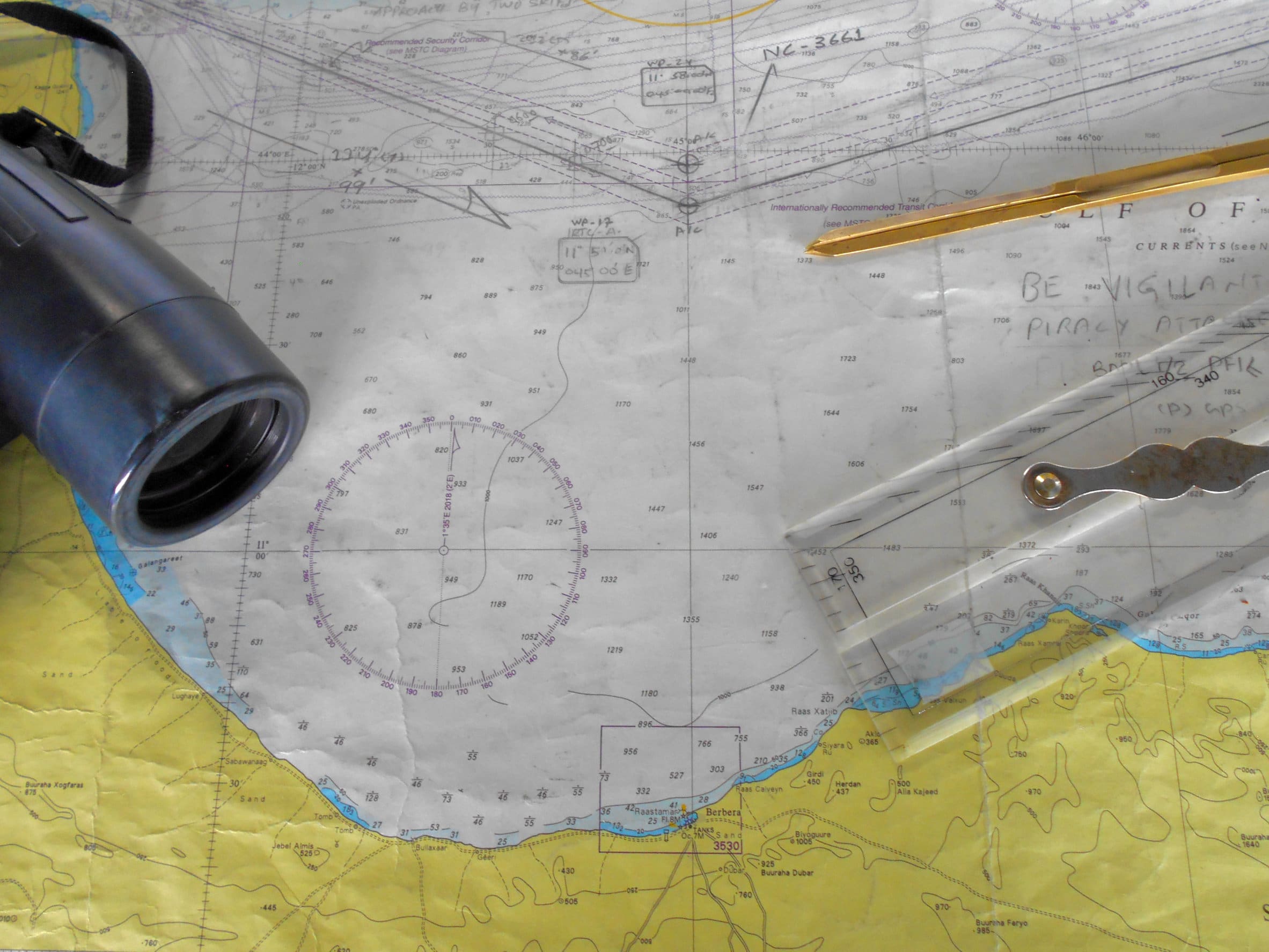In this post
People use vectors in physics mostly, and they give a relation between two different directions. They are related to right-angled triangles so we can use some of the tricks we have learnt previously on this course.
What is a vector?
A vector can be thought of as a journey which has two different ways of being described:
- With components
- With a distance and direction
What this means is that we can describe the ‘journey’ by moving straight to the destination after being given the angle or we can move along horizontally and then vertically upwards. Since we know that the hypotenuse of a right-angled triangle squared is equal to the other sides squared and then added together, we can relate the two directions.
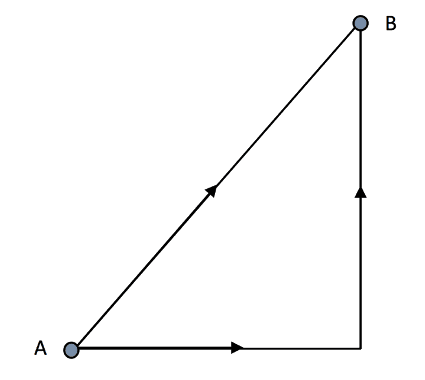
To get from A to B we can go down the hypotenuse of the triangle or go along the bottom edge and then up. Therefore, if we can relate these two we will not even need to know a direction, we would just need to know how far along and then how far up we must travel. This is where vectors are very useful!
Notation
To find out how far along and then up we must travel to end up at the same destination as going along the hypotenuse, we need to use notation. For this we use the letters i and j.
i = the distance horizontally that we must travel
j = the distance vertically that we must travel
So if we were to write a distance of moving 4 along and 5 up we could write this as 4i + 5j. This could then be shown in a grid to find the total distance travelled:
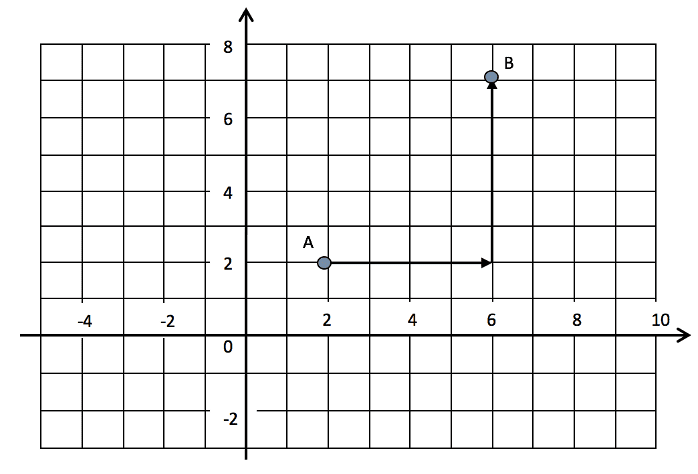
We write the vector with components i and j in bold to make sure that we do not think that they are unknowns. Sometimes you may see them with a small squiggle (![]() ) underneath or on top of the letters i and j. This again denotes that the letter is representing a vector. The start and finish of the vector, say points A and B, are used to name the particular vector. So above we have
) underneath or on top of the letters i and j. This again denotes that the letter is representing a vector. The start and finish of the vector, say points A and B, are used to name the particular vector. So above we have ![]() or ‘vector AB’. The arrow on top of the letters simply tells us that we are working with a vector that goes from point A to point B.
or ‘vector AB’. The arrow on top of the letters simply tells us that we are working with a vector that goes from point A to point B.
When looking at vectors, a wide range of different terminology and notations can be used. Getting to know all of these can be tricky, but one of the main things to remember is that a vector can be named as being ![]() where A and B are two separate points. This shows that the vector is essentially the length and angle of a line that travels from point A to point B. Below we can see two different vectors that are in different locations:
where A and B are two separate points. This shows that the vector is essentially the length and angle of a line that travels from point A to point B. Below we can see two different vectors that are in different locations:
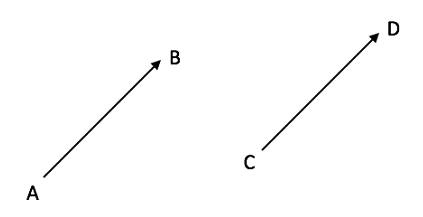
These two vectors can be labelled as ![]() and
and ![]() and are the same length and direction despite being is different locations. This means that we can say that
and are the same length and direction despite being is different locations. This means that we can say that ![]() .
.
When working with vectors we can also use something called a scalar. A scalar is a number that a vector can be multiplied by in order to change the length of the vector. It is important to remember that the direction of the vector is not changed during this – only the length.
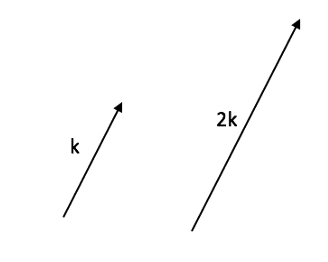
In the above image we can see that a vector of length k has been doubled to 2k as it has been multiplied by a scalar of 2.
Adding vectors
We can add different vectors simply by adding the different components of i and j for unit vectors or by adding the different values on the top and bottom of a column vector.
For example, (4i + 3j) + (2i2j) are both shown below, and by rearranging them so that they make one continuous line we can find the value of both of them together.
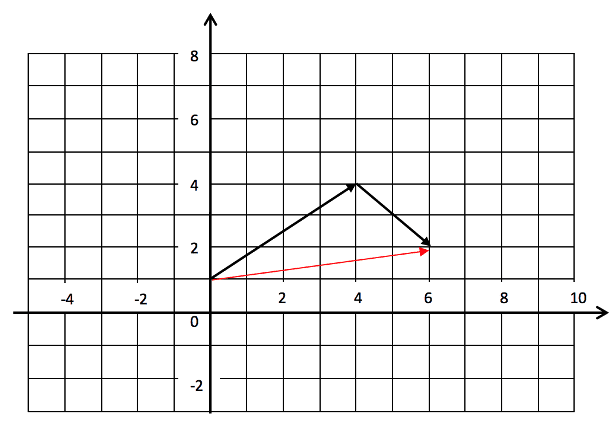
By arranging the two vectors ‘nose to tail’ (remember that the start and end points do not matter so we can move a vector and it still be the same) we can see the effect of both vectors. These two combine to make the vector shown in red which is the same as simply adding the components of the previous two (4i + 3j) + (2i2j) = (4 + 2)i + (32)j = 6i + j. So the red vector which is the combination of the two is equal to 6i + j.
The same can be done with column vectors. So ![]() +
+ ![]() =
= ![]() which then gives the red vector as
which then gives the red vector as ![]() .
.
Subtracting vectors
We can also subtract different vectors from each other. To do this, the vector which is being subtracted must first be multiplied by and then added (which is all that a subtraction is anyway). By multiplying the vector to be taken away by ![]() , we can draw the correct vectors out on a graph.
, we can draw the correct vectors out on a graph.
Example
We have the vector 4i + 7j and wish to take away the vector 6i + 2j. What is the resulting vector?
If we were to draw this out we would draw the vector 4i + 7j as normal but the vector 6i + 2j must be multiplied by ![]() before being drawn and assembled with the first vector, nose to tail. However, since we are not asked to draw the vectors we can simply do the calculation:
before being drawn and assembled with the first vector, nose to tail. However, since we are not asked to draw the vectors we can simply do the calculation:
(4i + 7j) (6i + 2j) = (4 6)i + (7 2)j = 2i + 5j
Or with column vectors we get:
![]()
![]() =
= ![]() =
= ![]()
Scalar multiplication
‘Scalar multiplication’ sounds complicated but it is actually very simple! A scalar is simply another word for a constant (number) which is multiplied by a vector. So if we have the vector A = 3i + 6j and we multiply it by the scalar 2, we get 2A = 2(3i + 6j) = 6i + 12j
It really is as simple as just multiplying each component of the vector (the i and j) by the number given! Of course, the number (or ‘scalar’) could be anything and even a fraction. But by sticking to our skills of multiplying out brackets we will easily find the answer.
Scalar multiplication with a column vector will do exactly what we expect: we multiply the top by the scalar and then multiply the bottom by the same number and leave the answer as a column vector still. So 3![]() =
= ![]() =
= ![]()
Really what we are doing if we were to map the vectors is combining a given amount. So if the scalar is 3, we are finding the value of applying a vector 3 times. So for the vector 2i + j multiplied by the scalar 3 we have:
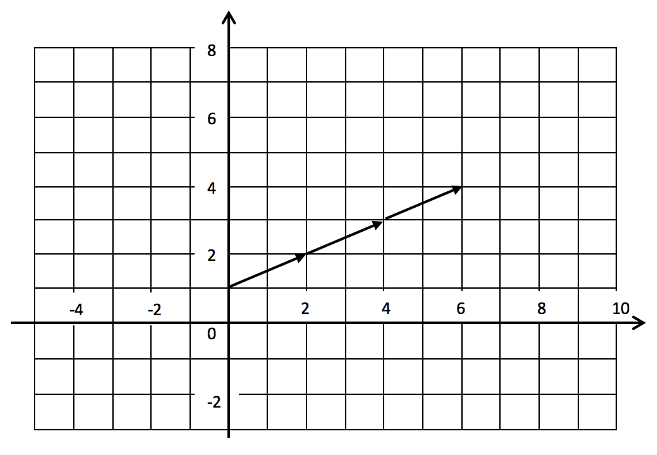
Which is clearly just the same as a vector in the same direction but 3 times as large.
Moving according to the vector 4i + 5j allows us to work out the distance we are from the original point by finding the hypotenuse of the resulting right-angled triangle.
Because we know the horizontal and vertical lengths of the vector we can use these to find the distance from start to finish. To do this we simply draw out the triangle and then use Pythagoras to find the hypotenuse. This means that we can use the unit vectors we have already come across in this lesson to find the vector length.
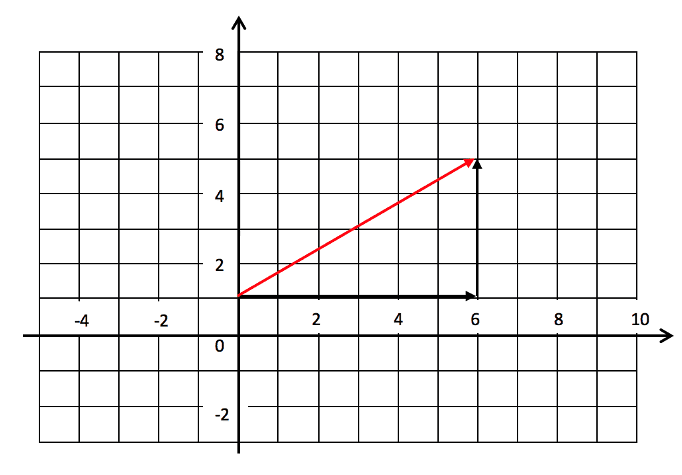
Above we have the red vector which can be shown as 6i + 4j. To find its length we need to us Pythagoras: ![]() .
.
So, to find a vector’s length we find:

This can obviously be used when we have a column vector also, by finding the square root of the two values squared.
Another thing that we can find out about a vector given its units in terms of i and j is its direction. This again is done by picturing the vector as a right-angled triangle, but this time we can use trigonometry to find the angle which the triangle makes from the x axis.
As an example we will stick to the vector that we already found the length for previously:
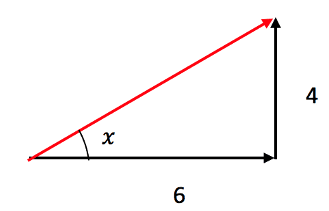
For the vector above we know the side lengths and from these we can use what we learnt previously to find the size of the angle x. In Module 8, Lesson 2 we learnt how to use the rule of SohCahToa to find missing angles and sides of right-angled triangles.
To find the angle marked as x we need to see that we have the opposite and adjacent sides to our triangle, therefore we need to use the trigonometric function tan. To find the angle x we need to use the formula:

The sides of the triangle which correspond to the opposite and adjacent are the components of i and j.
Therefore, we can change this to the formula:

Using this formula may sometimes give us a negative angle. This will be found when we have a vector which has either the i or j component as a negative. Should this happen, the angle will still be correct because the angle found is in comparison to the x axis.
If you are ever confused by this method, simply draw out the vector in question and write on the side lengths. Then using the trigonometric formula will be easier and you will have a visual representation of the angle which you are looking for. This then helps to check your answer as it will be obvious if your angle does not look like it is the correct size.
Different vectors as the same thing
Two vectors can be equal to the same thing, and the way to tell this is to align them up from ‘nose to tail’ and see if they will end in the same spot if they begin in the same place. This is best described using an example:
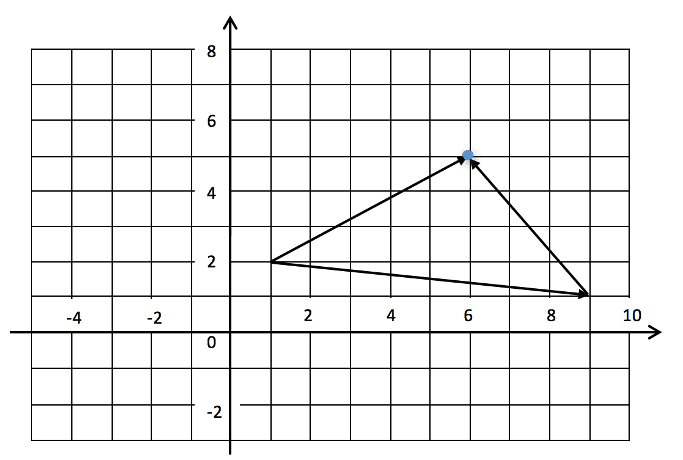
Above shows how the vector and 5i + 3j the two vectors 8i j and 3i + 4j give the same outcome, as when starting at the same point they will have the same end. This can also be seen by simplifying (8i j) + (3i + 4j) to see that this is in fact the exact same as 5i + 3j.

